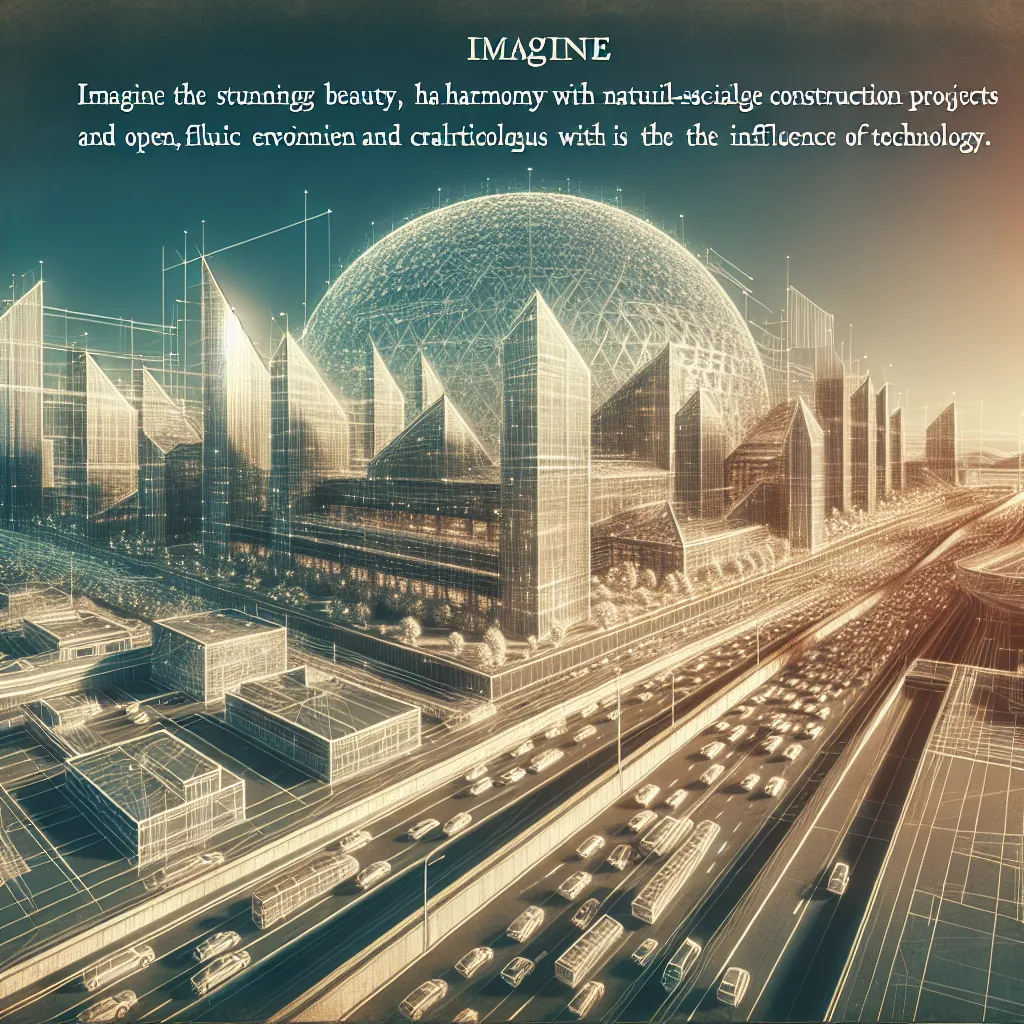
- Published on
- Authors

- Name
- Con Tech News
How Technology is Enabling Customization in Large-Scale Construction Projects
Welcome to the future of construction! If you thought the construction industry was all about hard hats and heavy machinery, think again. The fusion of technology and construction is creating a new landscape where large-scale projects can be tailored with unprecedented precision. Today, we'll explore the high-tech tools and innovations that are paving the way for bespoke construction on a grand scale. Buckle up; it's going to be a fascinating ride!
The Rise of 3D Printing: From Concept to Reality
Imagine walking into a building that looks like it jumped straight out of a sci-fi movie, where every nook and cranny reflects a unique design. This is not a far-off dream; it's the reality with 3D printing in construction.
The Power of Layering
3D printing, also known as additive manufacturing, allows for the creation of complex structures layer by layer. This method not only reduces waste but also makes it possible to craft highly customized components. Companies like ICON and Contour Crafting Corporation are already using large-scale 3D printers to construct homes and office buildings with intricate designs that were previously unfeasible.
Cost-Effectiveness and Speed
The ability to print custom designs quickly and cost-effectively is a game-changer. Traditional methods required weeks, if not months, of manual labor and significant financial investment. 3D printing slashes these timelines and costs, making it easier to implement unique architectural elements without breaking the bank.
Artificial Intelligence and Machine Learning: Designing the Future
Customization doesn't end with construction; it starts at the design phase. Artificial Intelligence (AI) and Machine Learning (ML) are revolutionizing how architects and engineers approach design.
AI-Powered Design Tools
Tools like Spacemaker use AI algorithms to optimize complex variables such as sunlight, wind, and noise, ensuring that the final design is both aesthetically pleasing and functional. These tools can generate multiple design iterations in a fraction of the time it would take a human, allowing for greater experimentation and customization.
Predictive Analytics
Machine Learning can analyze vast datasets to predict potential issues before they arise. For example, AI can identify soil instability or weather-related challenges that could impact the construction process. By leveraging predictive analytics, companies can customize their approaches to mitigate these risks, resulting in safer and more reliable structures.
Building Information Modeling (BIM): The Digital Twin Revolution
Building Information Modeling (BIM) has taken the industry by storm, acting as a digital twin of the physical building. This technology allows all stakeholders to collaborate seamlessly, from the initial design to the final construction phase.
Real-Time Collaboration
With BIM, architects, engineers, and contractors can work on the same digital model in real-time, ensuring that everyone is on the same page. This level of collaboration is crucial for customization, as it allows for immediate adjustments based on input from multiple parties.
Enhanced Visualization
BIM provides highly detailed 3D models that offer a near-exact replica of the final structure. This enhanced visualization helps stakeholders understand the impact of different design elements, making it easier to customize and perfect the building before construction even begins.
Robotics: Precision and Efficiency
Robots in construction? Absolutely! The rise of robotics is another frontier that is enabling high levels of customization in large-scale projects.
Automated Bricklaying and Welding
Robotic systems like the HADRIAN X can lay thousands of bricks with pinpoint accuracy, allowing for highly detailed and customized brickwork. Similarly, robotic welding systems ensure that every joint and seam is perfect, providing both strength and aesthetic quality.
Drones for Inspection
Drones equipped with advanced imaging technologies can survey construction sites in real-time, offering insights into areas that require customization. These aerial eyes can identify inconsistencies or suggest enhancements, ensuring that the final build aligns perfectly with the envisioned design.
The Internet of Things (IoT): Smart Construction Sites
The Internet of Things (IoT) is making construction sites smarter and more interconnected. By embedding sensors and smart devices throughout the site, companies can gather valuable data to inform customization efforts.
Real-Time Monitoring
IoT devices can monitor various factors such as temperature, humidity, and equipment performance in real-time. This data helps in making instantaneous adjustments, ensuring that customizations are executed perfectly.
Enhanced Safety
Safety is a paramount concern in construction. IoT technology can monitor worker health and safety conditions, allowing for immediate intervention if any risks are detected. This ensures that customization efforts do not compromise the well-being of those on-site.
Conclusion: The Future is Custom
From 3D printing and AI-driven design to BIM and IoT, technology is reshaping the landscape of large-scale construction projects. The possibilities for customization are endless, limited only by our imagination and technological advancements. As these innovations continue to evolve, we can expect the buildings of the future to be more personalized, efficient, and awe-inspiring than ever before.
So, next time you see a unique, customized building, you'll know that it's not just the vision of an architect but the result of cutting-edge technology working in harmony to create something truly special.
Stay tuned for more insights into how technology is transforming industries and pushing the boundaries of what's possible. Until next time, keep dreaming big and building better!
